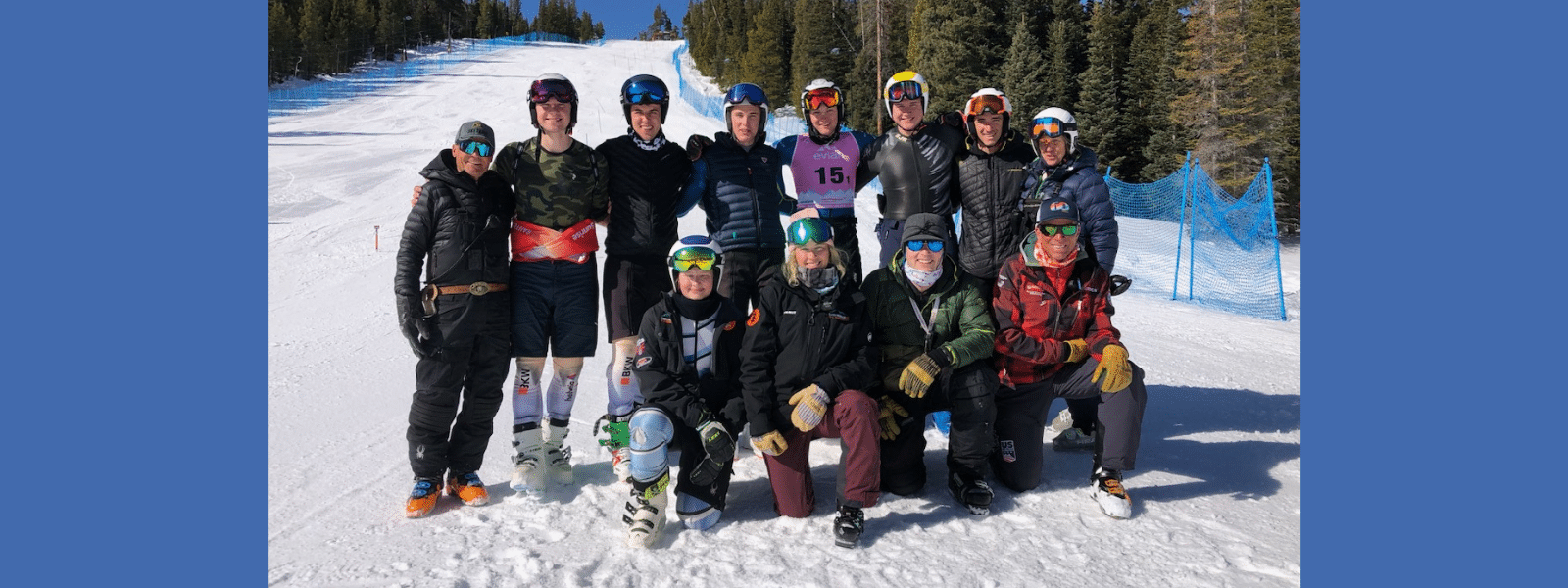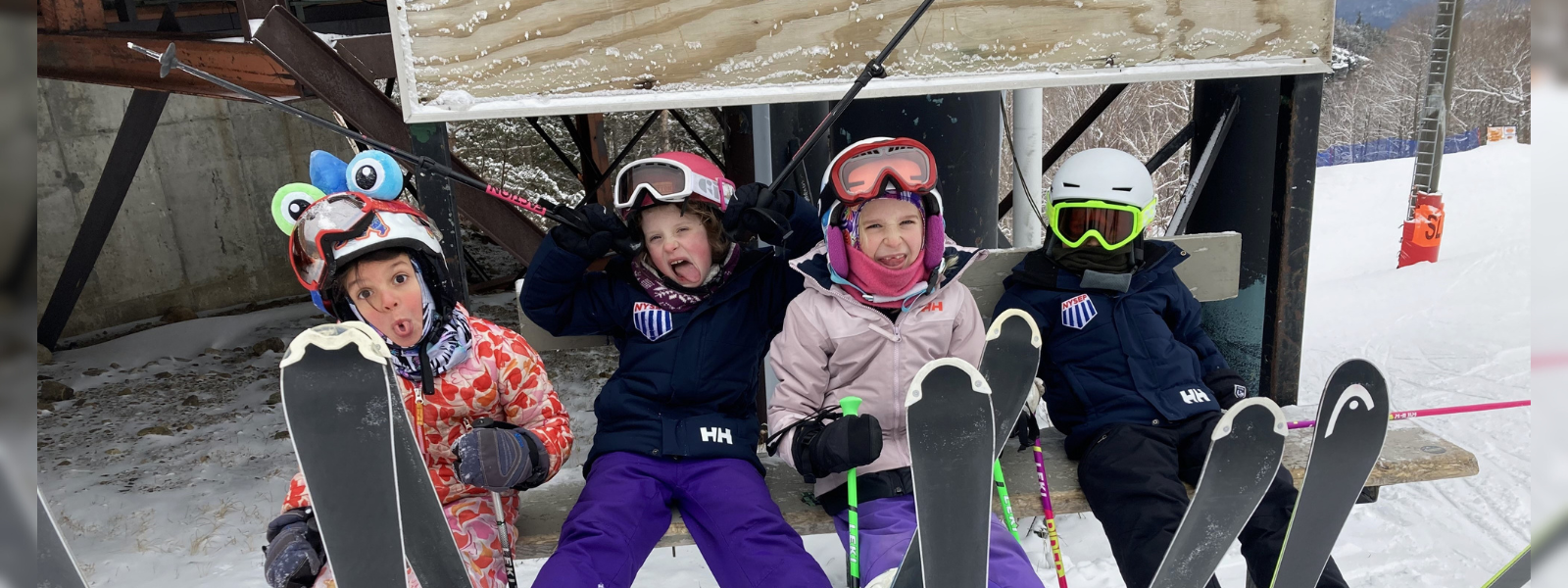USSA’s New Vision for Masters and Adult Ski Racers
In May 2016, USSA’s President and CEO Tiger Shaw opened the annual USSA Congress by introducing a new vision, mission, values and goals for all competitive disciplines and constituencies of the organization. The presentation made me reflect on how the Masters circuit matches up to Shaw’s expectations. Here’s the backbone of his new game plan and my report card on how we measure up.
Vision: Make the United States of America the best in the world in Olympic skiing and snowboarding.
I’m not aware of any Masters racers trying to make the 2018 Winter Olympic team heading to PyeongChang, South Korea, but we do try to be the best in the world in our own way. Over the years, a number of top American racers have garnered gold on the FIS Masters Cup. In 2014, Tim Hill bested Austrian Thomas Sykora – who won nine World Cups and two World Cup slalom titles in the late 1990s – at the FIS Masters Criterium (world championships). Anne Nordhoy has been frequently in the medals since she started traveling the international Masters circuit a couple of decades ago. Rick Slabinski starts the 2016-17 season ranked third in the world in super-G in his age group (Men 55-59).

Rick Slabinski, an American standout on the FIS Masters Cup, aces a slalom. Credit: Lisa Densmore Ballard
And then there’s Pepi Neubauer (pictured in the cover image). Last winter, Neubauer crushed the competition, not only in his age group (Men 70-74) but also in Group B (Men 55+). He brought home an overall FIS Masters globe and discipline globes in super-G, GS and slalom, a feat that certainly qualifies as “best in the world”!
As I write this, I’m heading to Chile to compete in the opening races of the 2016-17 FIS Masters Cup with 40 other Americans. Can one of us match Neubauer’s success? We’re going to try. Check back in April.
Mission: Lead, encourage and support athletes in achieving excellence by empowering national teams, clubs, coaches, parents, officials, volunteers and fans.
Masters racers are all of these rolled into one. We’re athletes, of course, but we also belong to ski clubs. Many of us coach. We have kids who race. Some of us officiate, which usually counts as volunteering. And we are among the most avid cheerleaders of our favorite U.S. Ski Team members.
If I had to pick one Masters racer who embodies USSA’s mission, it would be Bill McCollom. McCollom has been a member of the Woodstock Ski Runners club at Suicide Six, Vermont, for most of his life. On any given winter day, you might find him setting a course for a handful of local adult racers or coaching the Woodstock High School Ski Team to another state championship. His son, Eric, was a ski racer. McCollom frequently serves as a referee or in another official capacity. He has been Eastern Division’s Masters chair for a couple of decades. If a U.S. Ski Team member is from Vermont, you can bet McCollom is not only a fan, but knows him or her personally. And he still slips into the Super Seed on the very competitive New England Masters circuit. McCollom is but one of the many adult racers who embody USSA’s mission.
What is Masters ski racing? Find out in this informative video from 2013.
Values: Integrity, Passion, Fun, Team, Community, Excellence, Grit
Integrity to me means sportsmanship. It’s a rare race when a Masters skier flings a pole in anger or swears in the finish. More likely, a Masters champion who makes a mistake is the first to congratulate a fellow competitor who gets on the podium for the first time.
What’s more, Masters ski racing is fun. That’s why we do it. It’s also social. Masters racers embrace the ski racing community. And we’re certainly passionate about our sport. But of all the values listed above, grit strikes me the strongest. USSA defines grit as “courage, tenacity and perseverance in the face of adversity”. We Masters racers have had our share of bumps, bruises, knocks on the head, knee tweaks and lower back pain, and like Lindsay Vonn, we come back stronger and more determined. These are the risks of ski racing regardless of age or ability, but Masters deal with more – arthritis, cancer, heart attacks, stroke, to name a few. Paul Rich has Parkinson’s disease and still stands proudly on the podium at the Masters nationals every year. How many adult racers do you know with a new hip, a new knee, or both? And then there’s Nancy Auseklis. Auskelis frequently wins in her class with a fused ankle and vision issues stemming from a brain tumor (surgically removed), in addition to the usual orthopedic repairs we’ve all dealt with.
Looking at USSA’s new vision, mission and values, I give the masters straight A’s. This winter, I’ll try to compete with the same grit as Auseklis, ski as fast as Neubauer, have as much fun at it as Rich and be as involved as McCollom. And the best part? Unlike the U.S. Ski Team, on the Masters circuit, you never have to retire. You can keep on racing as fast as you dare for as long as you want.
Have a look at the full 2016-17 U.S. Alpine Masters schedule, and register to join us this winter.





















